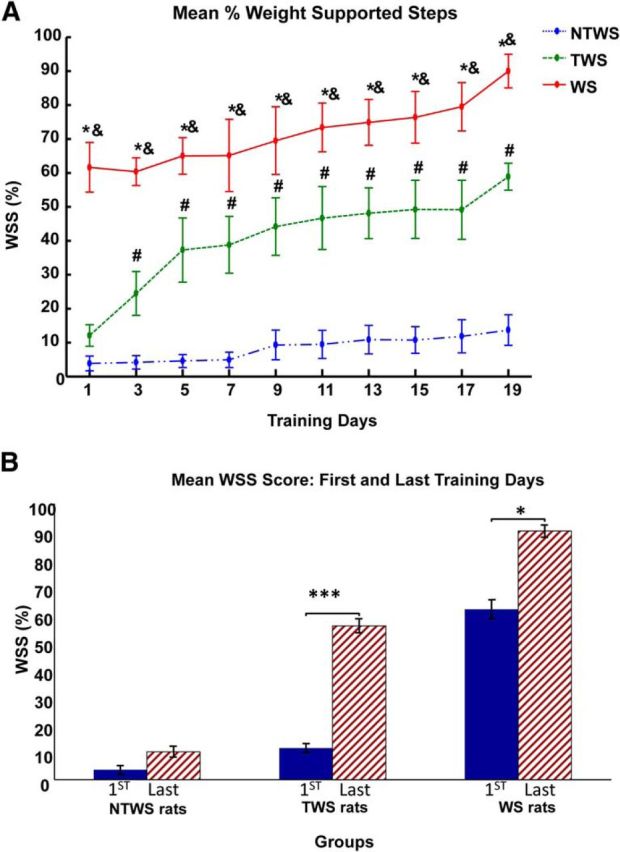Figure 6.

Robotic rehabilitation training increases the proportion of autonomous weight-supported hindlimb stepping (%WSS) in the WS, TWS, and NTWS groups. A, Plot represents mean ± SE of %WSS for each group over the course of robot rehabilitation training. There was a significant training effect (two-way repeated-measures ANOVA, F(9,135) = 20.24, p < 0.001) on %WSS over time in all three groups of rats. There were also differences in the %WSS recovery performances among the groups as indicated by the group effect reported in two-way repeated-measures ANOVA (F(2,15) = 47.01, p < 0.001). Post hoc comparisons of the group effect showed that mean %WSS for WS group was significantly greater than the TWS group (p < 0.01), whereas the mean %WSS for the NTWS was significantly less than both the WS and TWS groups (p < 0.01 for both comparisons). As shown in the figure, this is also evident in the daily post hoc comparisons among groups. *Significant difference between WS and NTWS groups (p < 0.05). &Significant difference between WS and TWS groups (p < 0.05). #Significant difference between TWS and NTWS groups (p < 0.05). B, Post hoc comparisons of the training effect showed that the mean %WSS on the last training day were significantly greater than the first training day for only the WS and TWS groups of rats (*p < 0.05 and ***p < 0.001, respectively).
